Clean and comfortable toilets are a symbol of Japan’s hospitality culture. Most toilets are free to the public and very clean. However, many visitors are surprised to see Japanese high-tech toilets. This article introduces how to use them.
1. Two types of toilets
There are extremes, traditional style toilets and high-tech toilets.
The former is a squat type. It is a sink in the floor. People squat over it to the job. Such traditional style toilets are now disappearing in big cities, but in countryside you may encounter. This style toilets are found in other Asian countries, too.
The latter is a western type with many ingenious devices. The most characteristic is a small nozzle. It sprays warm water to wash the user’s bottom after each use. In cold winter, the stall is heated comfortably. Some toilets can start sound of a stream or bird’s singing. So, there are a lot of buttons to control such functions. The manual of the toilet of my house has 68 pages. I do not think that many people understand all functions.
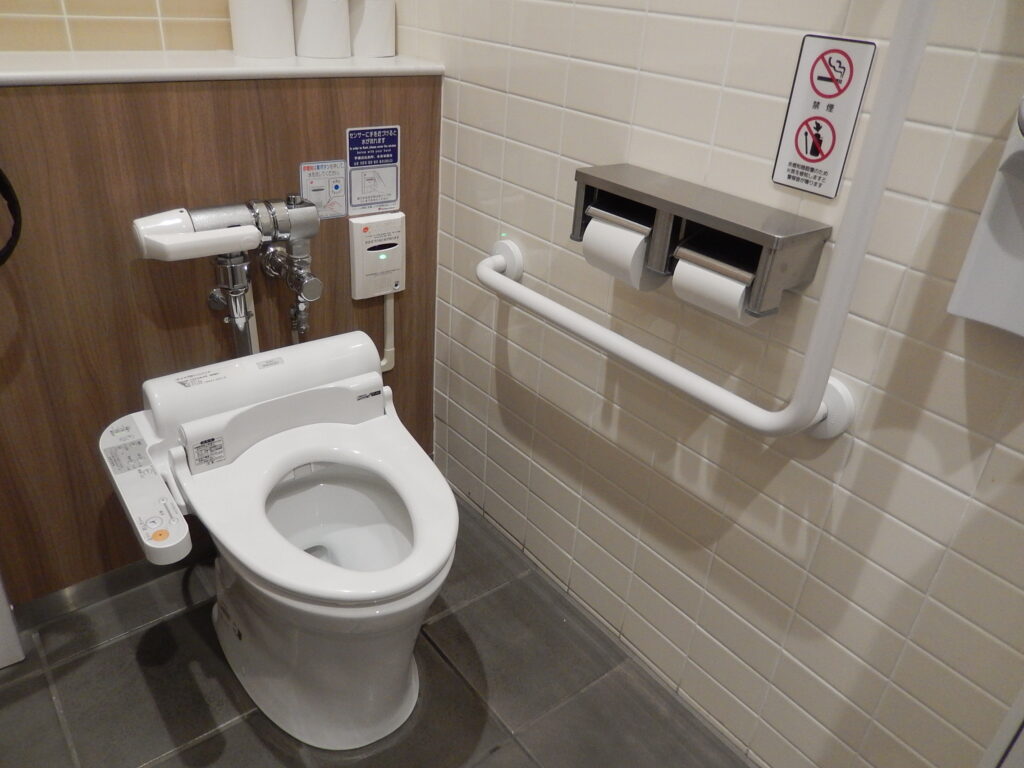
2. Tips to use a high-tech toilet
Some high-tech toilets have unique functions which may confuse even Japanese.
(1) Motion-control sensor
Depending on the model, the flush handle will be located on the side of the tank, or it will be replaced by a push button, or a motion-control sensor. The handle and button are easy to use, but the motion-control sensor is sometimes difficult. This sensor type was developed to flush water without touching anything for hygiene. Usually, there is a description to use with small letters as follows:
In order to flash, please bring your hand close to the sensor.
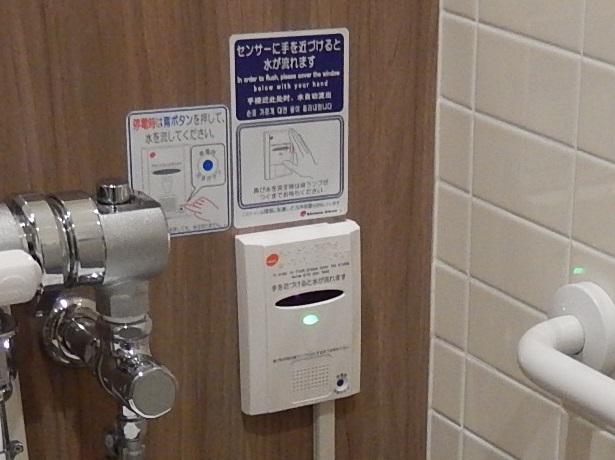
(2) Bidets
There are bidets that come with a bottom-wash button and a lady button, with variations of water jet strength and wash position. It is not easy for a first user to select proper buttons.
I don’t recommend you use the bidets at a public toilet, if you do not understand how they work. It is better for you to use them at a hotel room or a private home, where you can manage it even if you get clothes wet.
The following is how to use correctly.
Once you’ve done your business, it’s time to get cleaned up using the spray or bidet and toilet paper. First, you wipe down with toilet paper, and then you clean-up with the spray function. Finally, you dry your bottom with toilet paper.
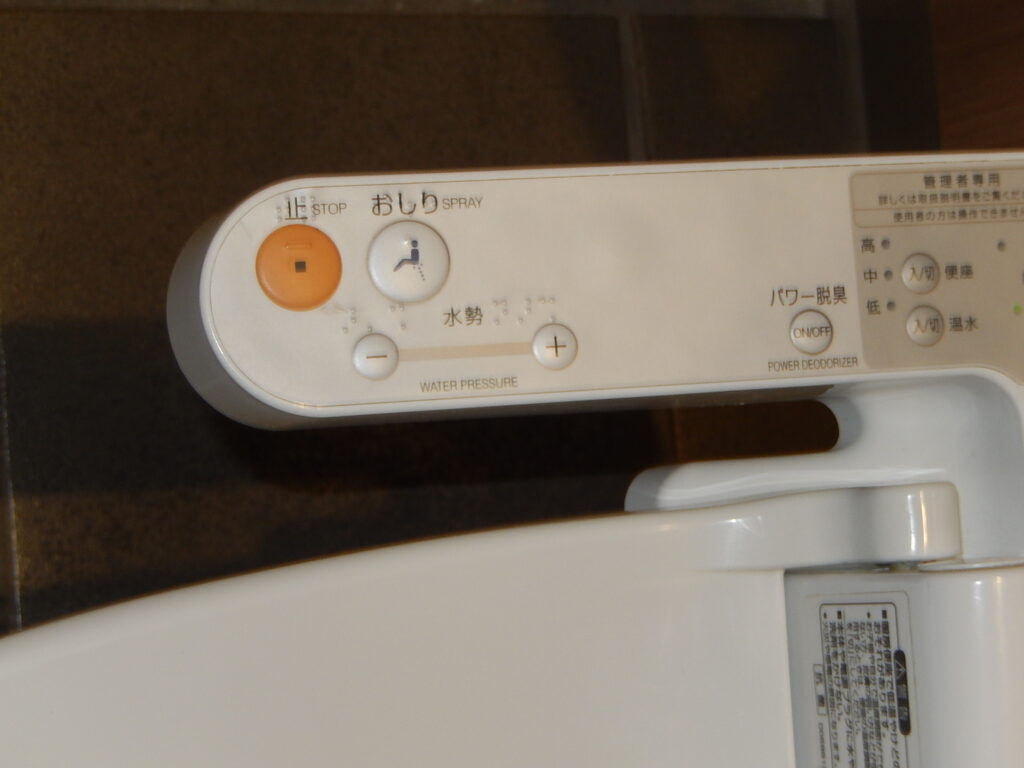
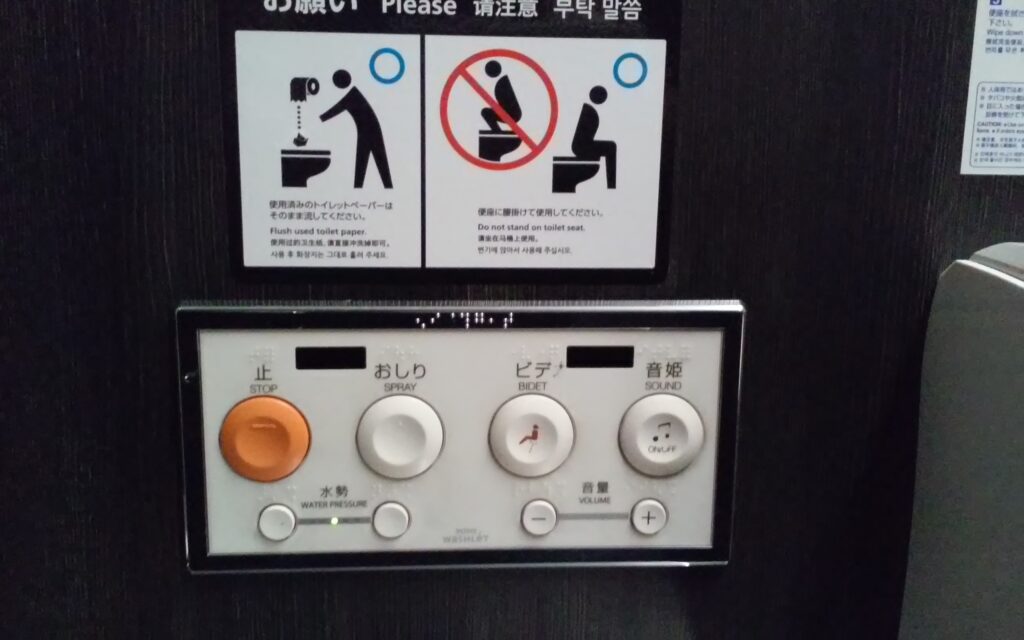
3. Development story
(1) Washing by spray
The high-tech toilets started to be developed some 40 years ago. Development required various data to determine the correct water angle. Engineers of the TOTO company asked their colleagues to “Please let us measure the location of your privates.” No body said yes. So, one engineer sets a string over the stall and asked colleagues to sit and mark the location of their private parts. This measuring method worked. To find the right water temperature, they experimented by sitting on the stool 16 hours a day. Some burned their delicate parts because the water was too hot.
After many struggles, they came upon the Golden Rule. The devices worked best when the water temperature is 38 degrees Celsius, and the angle of the water spray is about 43 degrees.
The product made its debut with a great success. The famous sales copy is “Bottoms also want washing.” Now about 80 percent of Japanese homes are equipped with such a high-tech toilet.
(2) Sound effect
Regarding the sound, there is a story. Not only private toilets at home but also public toilets use the high-tech toilets. In large office buildings, many people were flashing during their jobs because Japanese were shy. They, especially ladies, do not like to be heard their sound and tried to make noise by flashing water. It cost much for owners of the buildings and caused waste of water. A toilet company tried to develop a function to start such sound as water stream or bird singing. This idea was great. After introducing of the function, water consumption has been reduced.
4. Hospitality by clean toilets
Toilets are a symbol of Japan’s hospitality culture. Public toilets have been redesigned with using high-tech toilets in many places including Airports, Train stations, Department stores, Shopping-malls, Highway rest-areas, and Parks. The next picture shows clean mens toilet in the Umihotal, an artificial island in Tokyo Bay. Users can see the sea during their jobs.
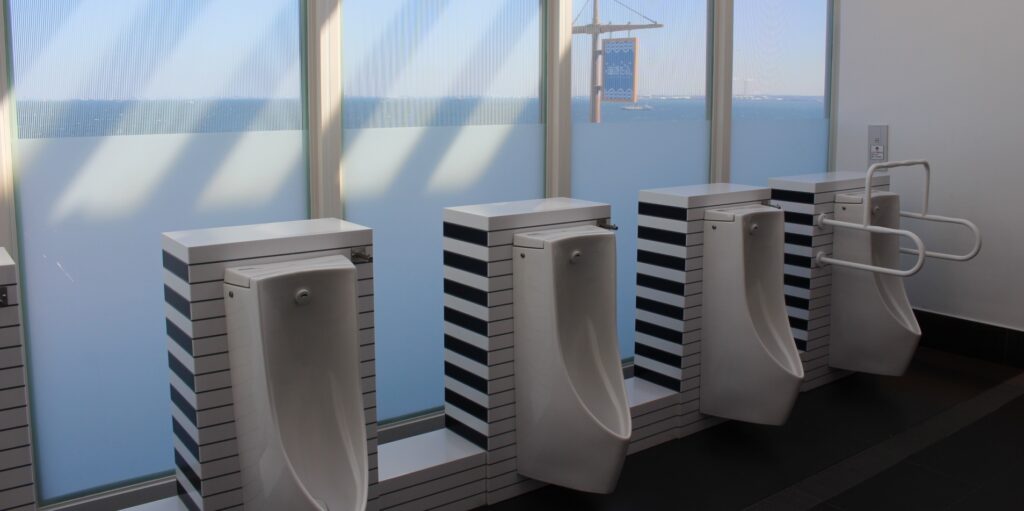
It is common that there should be clean toilets at public places. I hope that many visitors find it comfortable to use toilets in Japan.
5. Reference
(1) “Tell me about Japan in two munites” by H.Sugimori
(2) “Everything you need to know about using Japanese smart toilet” by Tsunagu Japan
(3) Manuals of high-tech toilet by manufacturers

Comment